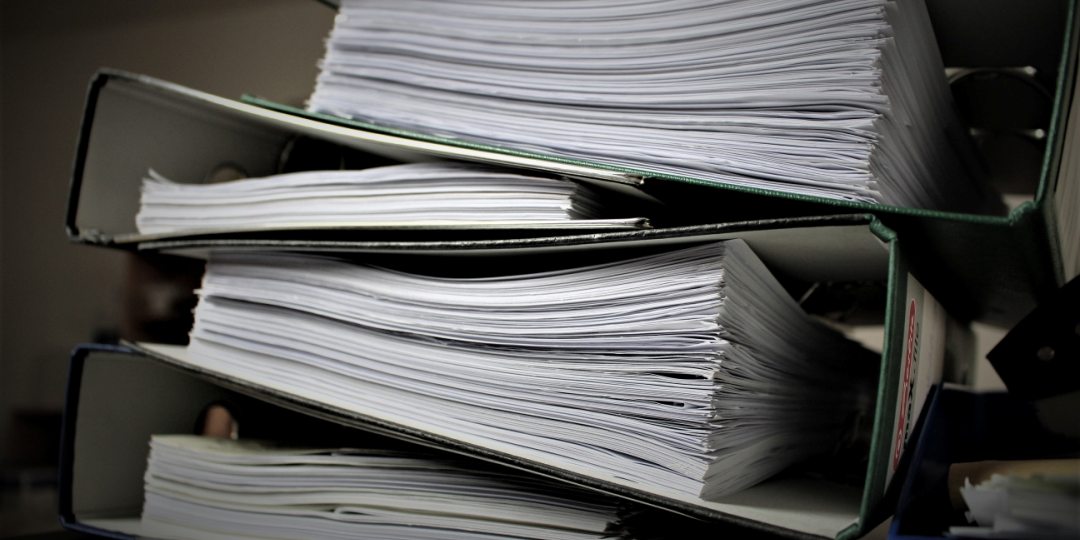– The provisions of the new Law on Archival Material and Archival Activity have been in force since February 1, 2021.
We use the words “archive” and “archiving” in our daily work, and we all know that name of some institutions contains the word “archive”.
But do we know which documents may be treated as “archive” and what are our legal obligations in terms of maintaining and marking our business documentation, its disposal, storage, and destruction, and what procedures do we need to apply in the treatment of our archives? After all, what risks do we take if we do not comply with the law in this area?
In our regulations, the word archive has so far appeared in one article of the Law on Cultural Heritage, which was passed in 1994, where in the chapter entitled: Types of cultural goods and goods that enjoy prior protection, movable cultural property includes Archival material . Our country was, thus, one of the few countries in the world that does not have a law that comprehensively regulates the protection of archival material, as an extremely important segment of cultural heritage, for many years.
Last year, the National Assembly of the Republic of Serbia adopted the Law on Archival Materials and Archival Activities (“Official Gazette of the RS”, No. 6/2020 – hereinafter: the Law), which entered into force on February 1, 2020 and has been applied since February 1, 2021, and so, after a long time this area is finally regulated by a special law.
The law is very complex, so with this text we will include a couple of novelties that were introduced and draw attention to some issues that arise from it as practical for application in the daily work of business entities.
The first question that arises is: “Am I the creator of archival material and documentary material?” The law defines that a legal or natural person whose activities (work) create archival material and documentary material are both Creators of archival material.
What is archival material then? Archival material is a set of documents or records that were created by the companies and entrepreneurs in their daily work, and are of lasting importance for culture, art, science, education and other social areas, and , as such, are permanently preserved.
The new object of this Law is the category of archival material in electronic form, which is defined as archival material that was originally created in electronic form. At the same time Law envisages the establishment of special institutions that will deal with archival material in electronic form.
Documentary material that is permanently kept, from which no archival material has been selected, must not be damaged or destroyed, regardless of whether it is microfilmed or digitized.
And how do we know what is permanently stored, and who decides on it?
Here we come to a complex administrative procedure, which needs to be continuously applied in the daily work of a business entity, the basic outlines of which we will present below. First of all, it is necessary to emphasize that the deadlines for keeping business documents are prescribed by different regulations, while some documents are intended to be kept permanently.
If documents are not meant to be kept permanently, the law enables possibility of their destruction, provided that the consent of the competent authority is required for the destruction of the documentation. The new law defines a general deadline through a norm that reads: The creator, ie the holder of archival material, submits the arranged and listed archival material for safekeeping to the competent public archive after the expiration of 30 years from the day of its creation.
The creator of archival material is obliged to conscientiously keep, in an orderly and safe condition, archival material and documentary material in the form in which they were created, and for that purpose he is obliged to:
1) provide adequate space and equipment for the storage and protection of archival material and documentary material;
2) appoint a responsible expert for the protection of archival material and documentary material and the handling of archival material and documentary material
3) records, marks, classifies, dates and archives archival material and documentary material;
4) hand over archival material to the competent archive under the conditions and within the deadlines provided by this Law;
5) ensure the permanent storage of archival material in electronic form, its maintenance, migration, ie transfer to new media in the prescribed formats until the submission of archival material in electronic form to the competent public archive; 6) keep an archive book on the prescribed form;
7) submit to the competent archive a transcript of the archive book no later than April 30 of the current year, for documentary material created in the previous year;
8) obtain the opinion of the competent archive before taking measures related to archival material and documentary material (status changes, physical relocation, adaptation of premises, opening of bankruptcy or liquidation, microfilming, digitalization, etc.);
9) select archival material and allocate for destruction worthless documentary material whose storage period has expired, one year from the date of expiration of the established period;
10) enable the authorized person of the competent public archive professional supervision over the recording, classification, selection, archiving, storage, professional maintenance and protection of archival material, ie over its selection from documentary material;
11) act in accordance with the measures and deadlines imposed by the competent archive by a decision and on the basis of a previously made record on the determined state of protection of archival material and documentary material;
12) inform the competent public archive about all changes that are important for the archival material no later than 30 days from the day of their occurrence.
Now we all ask ourselves “why am I obliged to provide all this”? The legislator foresaw this question of yours, so in the chapter entitled “Penal provisions” he defined fines that will motivate you to treat your business documentation carefully, thus anticipating several situations that are the basis for determining the amount and collection of sanctions, of which we will list a couple:
A fine in the amount of 50,000 to 2,000,000 RSD will be imposed on a legal entity for a misdemeanor if it does not comply with any of its obligations listed above, but also if it does not adopt general internal acts provided by law (Rulebook on recording, classification, archiving and storage of archival material and documentary material; List of categories of archival material and documentary material with retention periods and Rulebook on the manner of recording, protection, and use of electronic documents).
The same sanction is threatened to the creator of archival material if he destroys documentary material without the approval of the competent archive, but also if he does not hand over the arranged and listed archival material to the competent archive.
We would like to mention here that these are not new obligations – you were obliged to act in a similar way until February 1, 2021, but now this matter is finally covered by one Law and the violation is sanctioned by serious fines.
However, bearing in mind that the economy in its work creates archival material that is originally created in electronic form, which will have to be stored in accordance with the provisions of the Law and regulations governing reliable electronic storage, the application of the law will certainly contribute to the need for certain investments in adequate computer equipment, equipment for digitization, microfilming, and document conservation.
Disclaimer: This text is written for informational purposes only as well as to give general information and understanding of the law, not to provide specific legal advice. For any additional information feel free to contact us.

Knićaninova 3
11000 Belgrade
Serbia
+381 11 3222 921
+381 11 3222 922
+381 11 3222 972
• Blog
• Careers
• Privacy Policy


